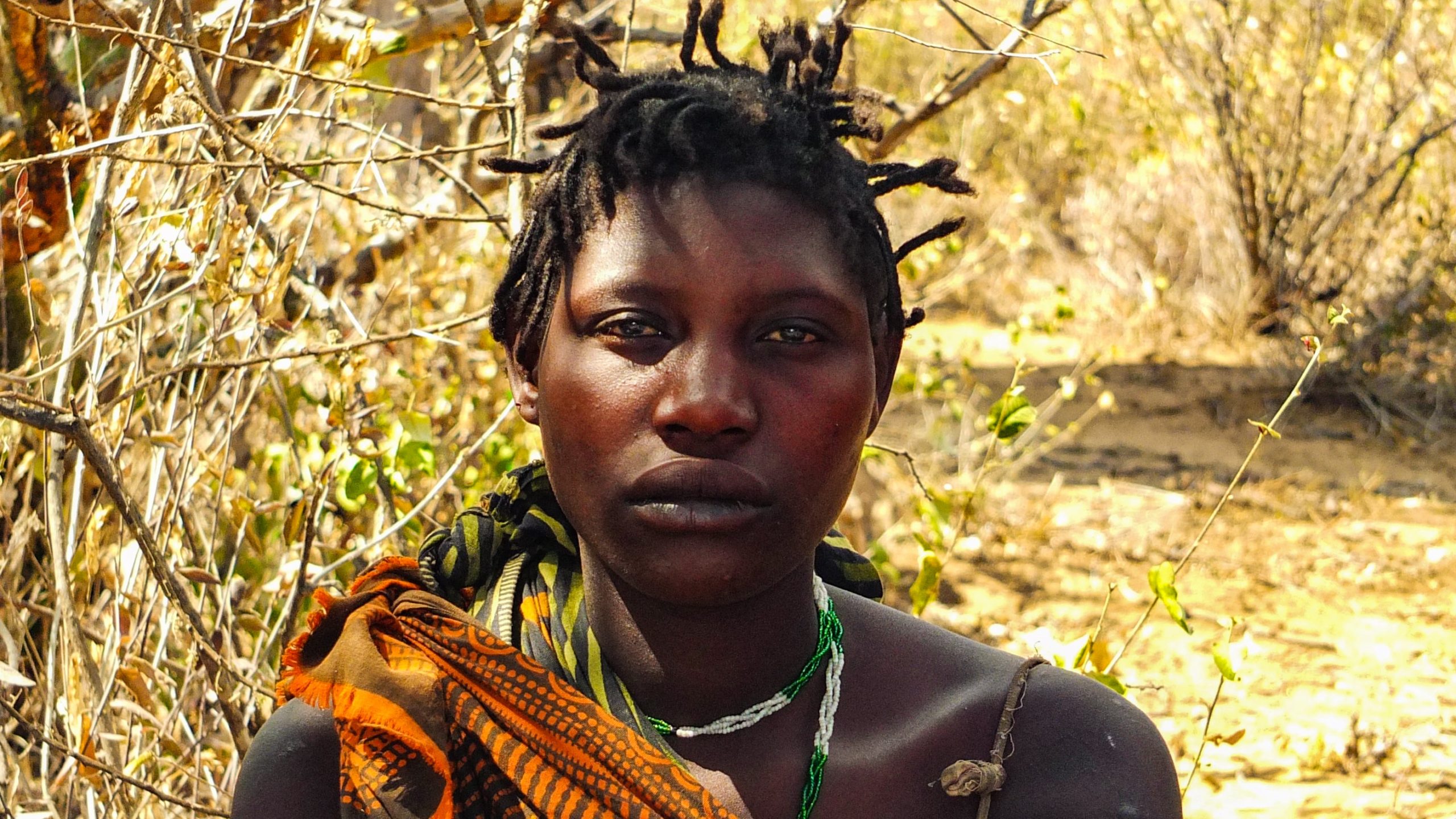
Tanzania is home to about 54 million people from a variety of ethnic groups. It is a relatively young nation, with nearly 45% of the population under the age of 15. The average life expectancy for Tanzanians is low—45 years for men and 46 years for women. Only about 3% of the population lives past the age of 64.
About 120 ethnic groups exist in Tanzania, with the Bantu peoples making up the majority—accounting for 95% of the population. The Bantus split into over 400 ethnic subgroups, not only in Tanzania but also across Central and Southern Africa. Other ethnicities in Tanzania include Nilotic groups, primarily the Maasai and Cushitic tribes. There is also a small percentage of Arabs, Indians, and Europeans, mainly British, who live along the coastal areas of Tanzania and the islands.
Tanzania is a multi-religious country. Christians make up about 61% of the population, while Muslims account for around 35%, with Zanzibar being overwhelmingly Muslim at 99%. The remaining population follows indigenous, animistic religions, with some adhering to Hinduism or Buddhism.

Sukuma
Sukuma is the largest ethnic group within the Bantu people. Approximately 16.7% of the Tanzanian population, which is close to 10 million people, belong to this group. Sukuma means “north” but can also be translated to “people of the north,” as the Sukuma primarily live in northwestern Tanzania and around the southern shores of Lake Victoria. They speak the Sukuma language and largely practice traditional African beliefs, although there are also Christians and Muslims among them. The people mainly engage in farming and cattle breeding, using most of the agriculture for their own needs. They grow crops such as sorghum, millet, peanuts, peas, sunflower, sweet potatoes, rice, corn, and, to a lesser extent, cotton..
Gogo
Gogo live in central Tanzania in the Dodoma region. They make up 4.32% of the population, making them the second-largest Bantu group with over 2.5 million people. Traditionally, Gogo are pastoralists and farmers. The harsh conditions in the Dodoma region—sparse rainfall, periodic droughts, and floods—often force them to migrate to urban areas and plantations across Tanzania in search of work. They speak the Gogo language and are religious ( with 79% being Christians and 20% Muslims).
Haya
The Haya are the third-largest ethnic group in Tanzania, making up 3.84% of the population, which is about 2.4 million people. They live in northwestern Tanzania. Most of the Haya are Christians, with about 81% of the population adhering to the faith. The remaining 12% are Muslims, and a small fraction passes on and practices old-fashioned African beliefs. The Haya speak the Haya language, which is lives on only in this subgroup.
Chaga
The Chaga are another subgroup of the Bantu in Tanzania, representing 1.96% of the population, which is about 1.2 million people. They live on the eastern and southern slopes of Kilimanjaro and Mount Meru, mainly in the Moshi region – the capital of the Chaga tribe. Interestingly, the Chaga tribe consists of several smaller groups, each speaking a different dialect of the Chaga language. The Chaga were among the first tribes to embrace Christianity, giving them better access to healthcare and education. Thanks to the favorable climate on the slopes of Kilimanjaro, they are considered relatively prosperous. The Chaga focus primarily on cultivating different types of bananas and producing Arabica coffee, which is exported to European and American markets.
The Maasai are one of the best-known African ethnic groups, mainly due to their distinctive customs and accessible territory. They lead a semi-nomadic lifestyle in Kenya and northern Tanzania, making it difficult to pinpoint their exact population, estimated at around 1 million people. They speak Maa, a language from the Nilo-Saharan family, but many Maasai also learn the official languages of Kenya and Tanzania: Swahili and English.
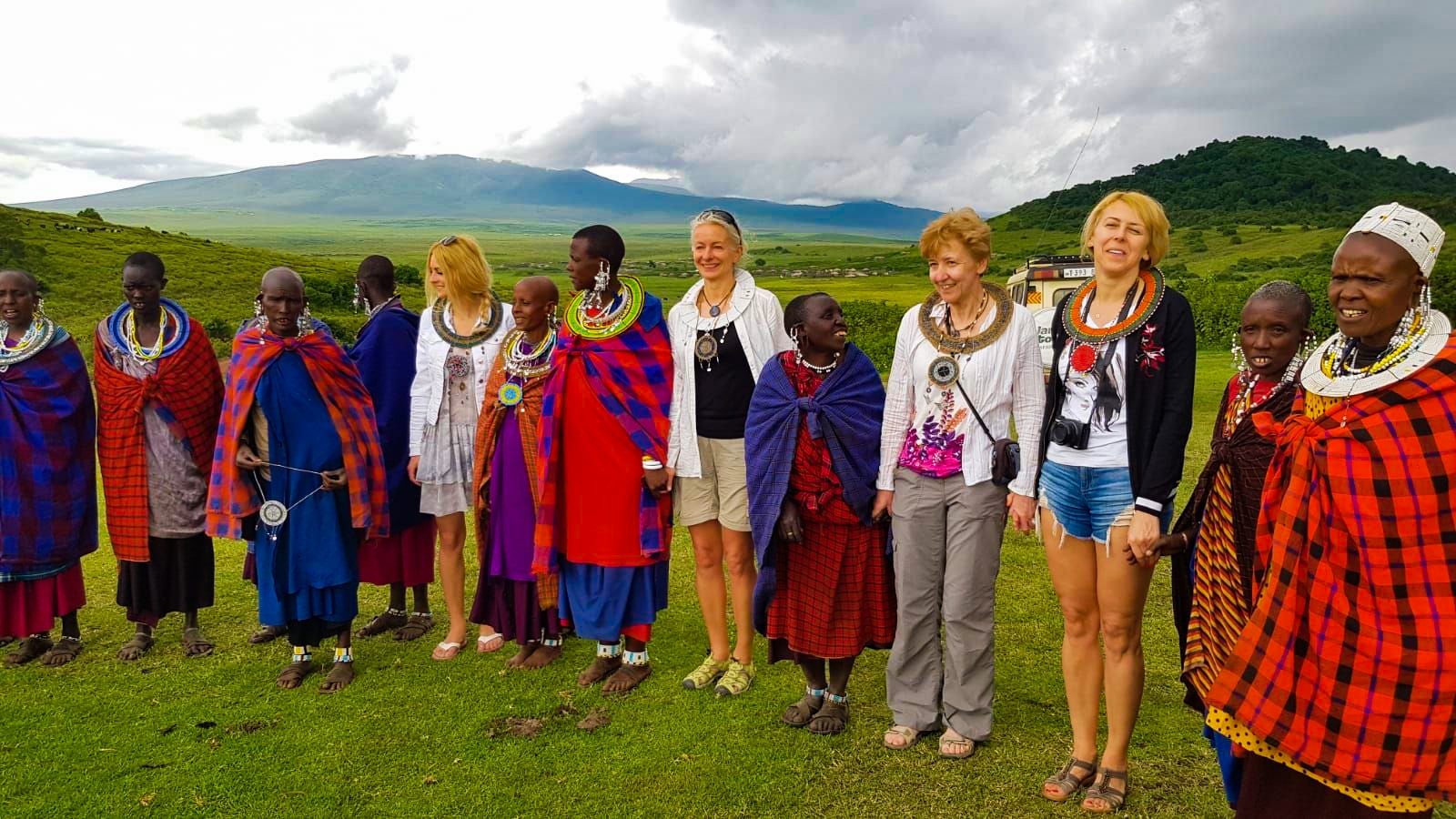
The Maasai have a strongly patriarchal society where men hold power, inherit property and make key decisions. They rely on oral laws to regulate most situations, often resolving disputes with apologies or payments in cattle. Strong community ties make them effective at teamwork, and as a group they are incredibly strong.
In Maasai culture wealth is measured by cattle and children. The more cattle and children a man has, the richer he is. A herd of 50 cattle is considered respectable. If a man has a large herd but few children, he’s considered poor and vice versa.
The Maasai have a high infant mortality rate, and they only recognize children from three months old. The Maasai do not hold funerals; the deceased are left for scavengers.
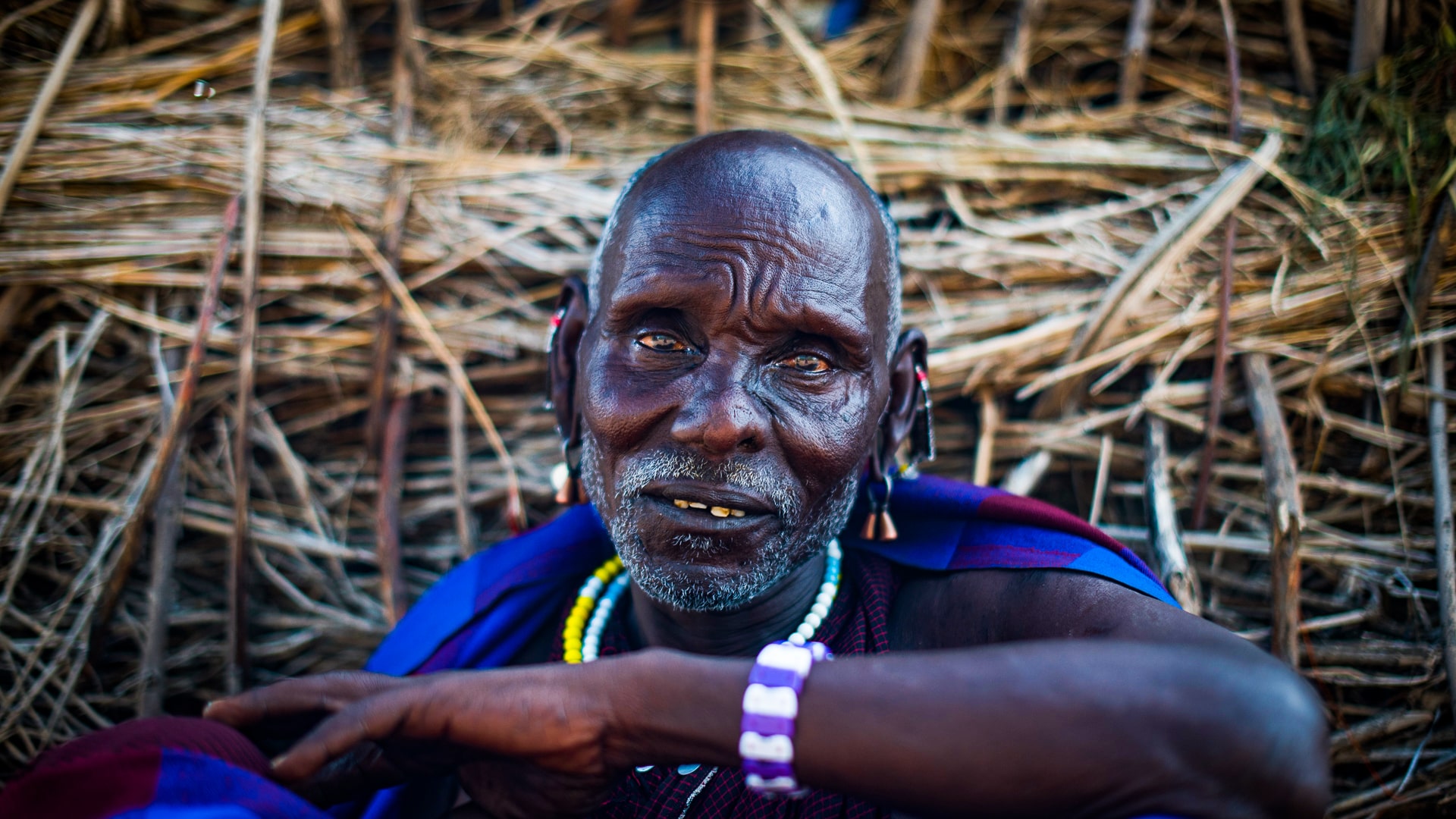
Children are taught to work from an early age. Young boys are responsible for taking care of cattle as soon as they can walk, while girls help with cooking and milking. Despite this, children mostly spend their time messing around, like typical children do.
The next stage for boys is becoming a warrior. Every 15 years, a new generation of warriors emerges, composed of boys aged 12 to 25. To become a junior warrior, a boy must undergo a silent, painful circumcision ceremony without anesthetic. Afterward, they must wear black clothes and sleep in huts without outer fences for 4 to 8 months to show that he is ready to take on the role and fight. Warriors patrol Maasai territories and defend the society; increasingly, they also manage cattle.
A boy becomes a senior warrior and a true man after the eunoto ceremony, where his head is shaved, allowing him to choose a wife. The previous senior warriors move to the next cohort, becoming young elders responsible for political decisions until they become senior elders
Women’s roles include various household tasks, fetching water, collecting firewood, milking cattle, and cooking for the entire family. Young women also undergo a form of female circumcision known as emorata, which signifies their readiness for marriage and comes with advice and guidance on their new role. Around 38% of Maasai women undergo clitoridectomy or genital mutilation. Despite controversies, these practices are deeply rooted in Maasai culture.
Polygamy and polyandry are allowed and often practiced. A child born to a Maasai woman, regardless of the biological father, is always considered the husband’s child and thus a part of his lineage.
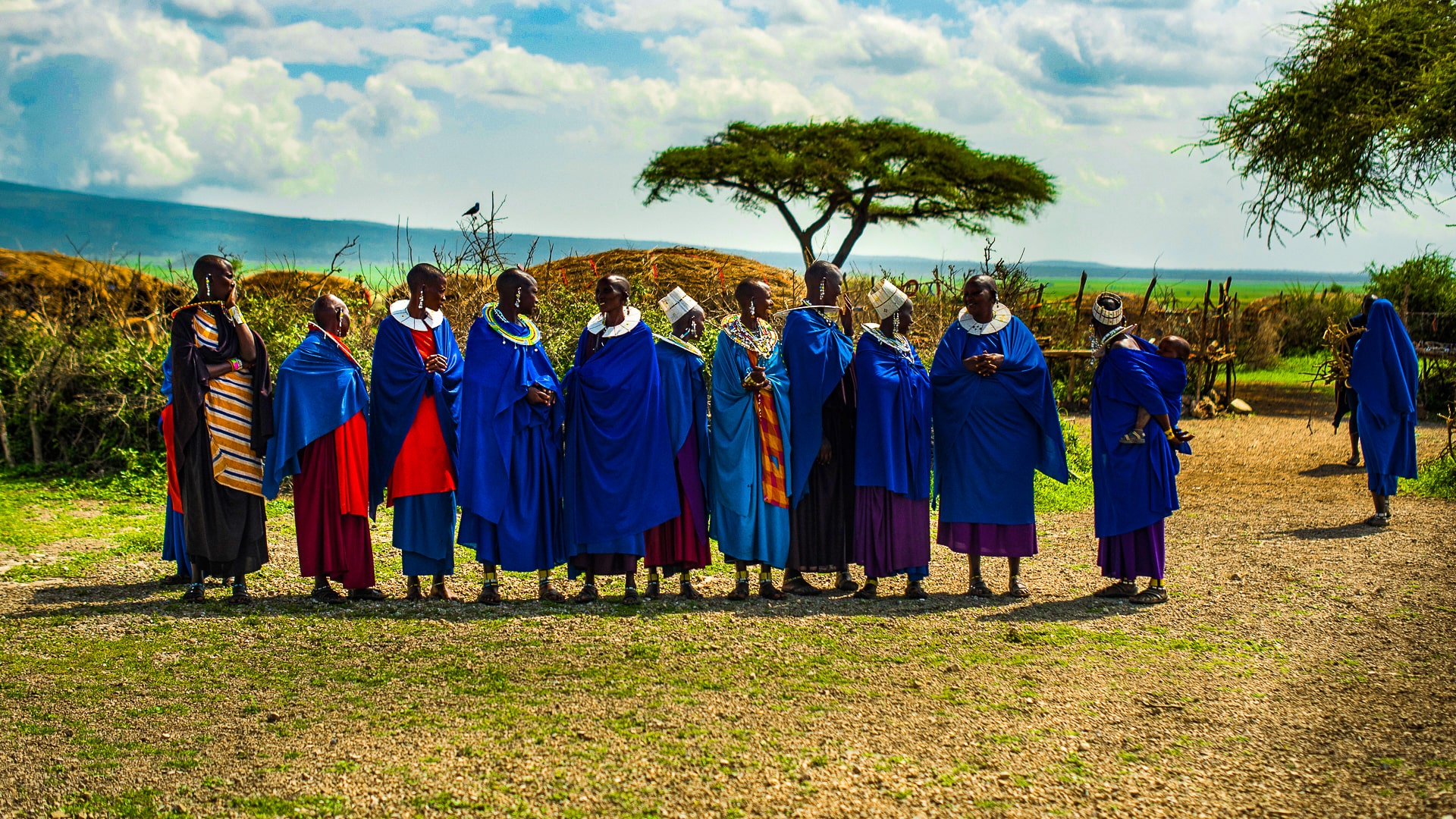
The Maasai believe in one God, Enkai (Engai), who has a dual nature: benevolent—Engai Narok (Black God), and vengeful—Engai Nanyokie (Red God). The holy mountain of Enkai is the active volcano Ol Doinyo Lengai, located in the Serengeti National Park, south of Lake Natron. The most important person in the Maasai religious system is the Laibon, who performs shamanic healing, prophesies, fortune-telling, and other religious rites. His power depends on his personality.
The Maasai believe all cattle in the world were given to them by Enkai, which justifies occasional cattle theft from other tribes as reclaiming what’s rightfully theirs
Some Maasai have converted to Christianity and, to a lesser extent, to Islam.
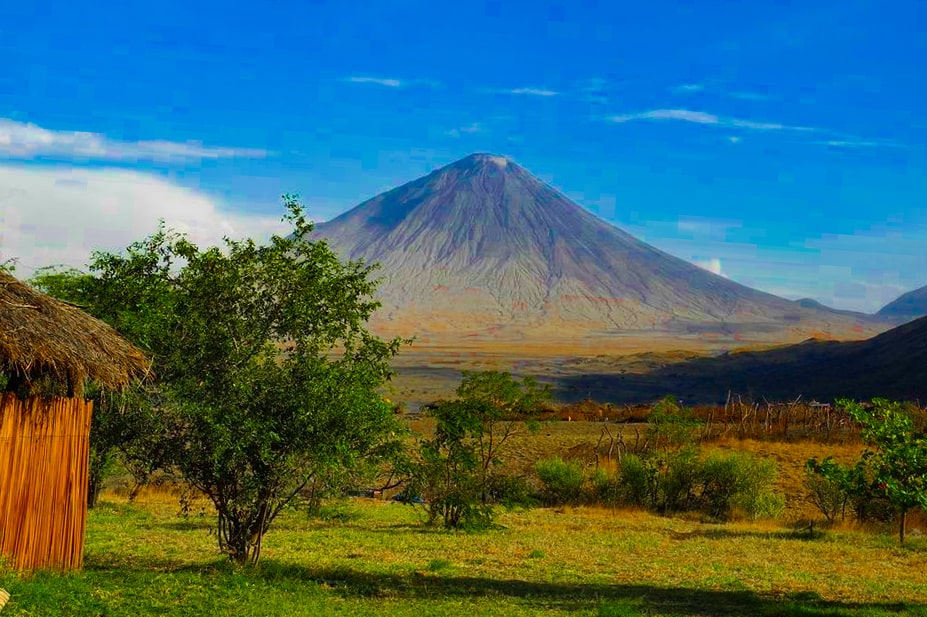
In Maasai culture, women are responsible for building houses. As former nomads, and now semi-nomads, the Maasai construct low-durability homes using local materials. They build a framework of sticks embedded in the ground and interwoven with smaller branches. The framework is then coated with a mix of mud, grass, cow dung, and ashes. The houses are oval and small, typically around 3×5 meters and 1.5 meters high, with a single room used for living, sleeping, cooking, and storage. The Maasai people very often share their living space with smaller house animals, that are treated similar to what we treat our pets like.
A Maasai village is surrounded by a circular fence built by men, usually from thorny acacia branches with the main function to protect against wild animals and other tribes. During the day, cattle roam freely, but at night animals are kept within the inner enclosure at the center of the village.
